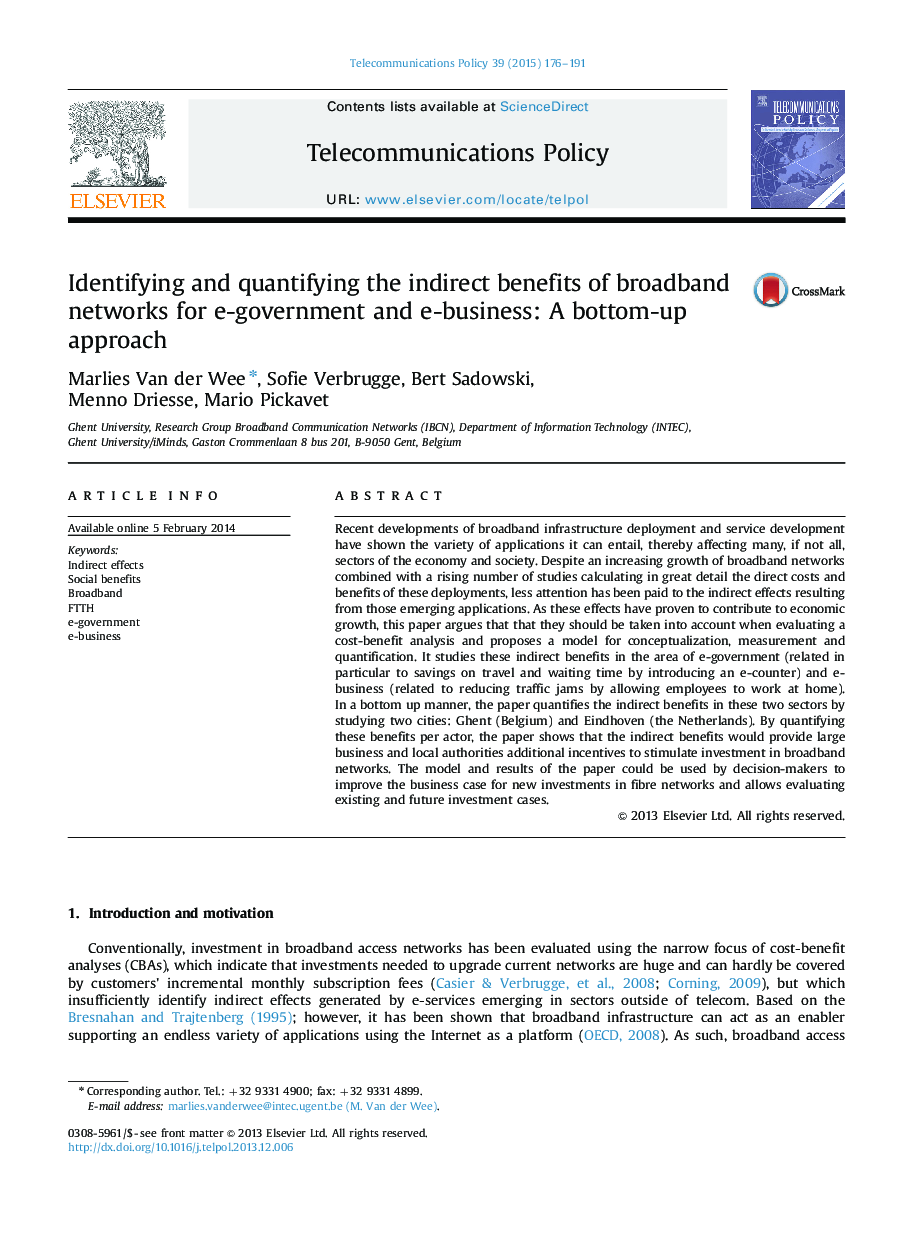| Article ID | Journal | Published Year | Pages | File Type |
|---|---|---|---|---|
| 556441 | Telecommunications Policy | 2015 | 16 Pages |
•Currently, deployments of Next Generation Access networks lack investment.•This paper indentifies, categorises and quantifies indirect benefits in two sectors: e-government and e-business.•The evaluation of these indirect benefits proves to be significant for individuals, companies and the government.•Indirect benefits should be internalised in the investment decision for NGA network deployments.
Recent developments of broadband infrastructure deployment and service development have shown the variety of applications it can entail, thereby affecting many, if not all, sectors of the economy and society. Despite an increasing growth of broadband networks combined with a rising number of studies calculating in great detail the direct costs and benefits of these deployments, less attention has been paid to the indirect effects resulting from those emerging applications. As these effects have proven to contribute to economic growth, this paper argues that that they should be taken into account when evaluating a cost-benefit analysis and proposes a model for conceptualization, measurement and quantification. It studies these indirect benefits in the area of e-government (related in particular to savings on travel and waiting time by introducing an e-counter) and e-business (related to reducing traffic jams by allowing employees to work at home). In a bottom up manner, the paper quantifies the indirect benefits in these two sectors by studying two cities: Ghent (Belgium) and Eindhoven (the Netherlands). By quantifying these benefits per actor, the paper shows that the indirect benefits would provide large business and local authorities additional incentives to stimulate investment in broadband networks. The model and results of the paper could be used by decision-makers to improve the business case for new investments in fibre networks and allows evaluating existing and future investment cases.
